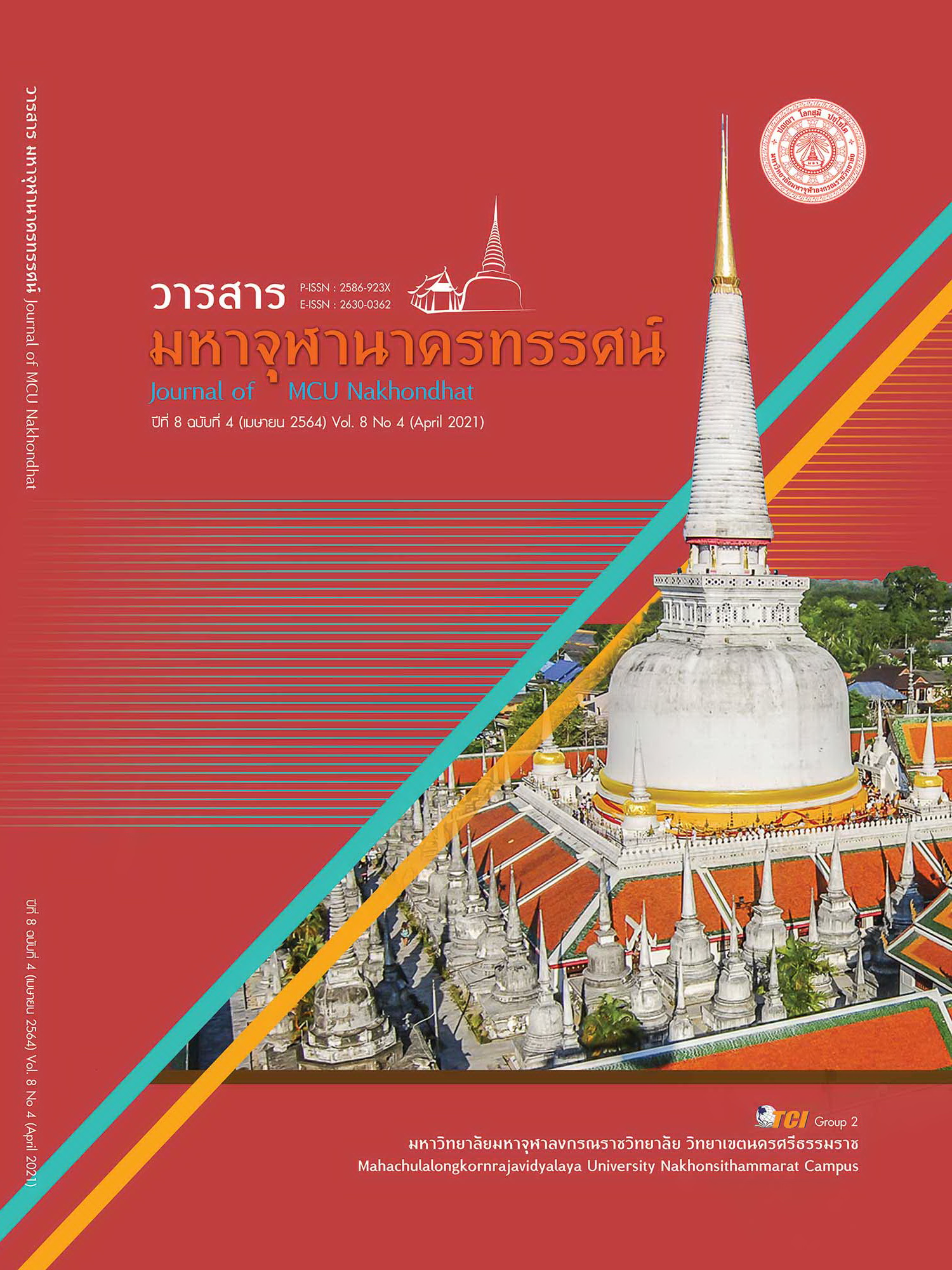BOMB TO BELL
Main Article Content
Abstract
This article aimed to study the parody named by outsiders “Phrae Parade Bomb” in which people living in Phrae province are often described as a joke that they took a bomb to the parade and it finally exploded; made all the villagers died. In fact, this parody has completely opposite meaning. During World War II, the bridge in Long district, considered the most important transportation, was bombed. Because of people’s faith in Buddhism and their local wisdom, they presented the bomb to the temple for using as a bell in order to signal the monks to do their praying ceremony. Additionally, the bell represents Buddhist merits since temple is the community center for villagers for merit - making. Besides, the bell are often used as a call to people as they can be heard even at great distances. In Thai culture, “Gong” has been used by people to announce the hours in daytime and bell has been used by Buddhist monks as the part of a sacred ritual. Therefore, bell has been regarded as an instrument of Buddhism declaration. People usually believe that persons who build the bell for Buddhist temples will be respected and famous both in their lifetime and next life. According to the mentioned historical facts of Buddhist bell, 3 bombs discovered in Long district, are currently considered historical sign and historic sightseeing. Phrae province is not only the small town, but also the town with many important histories and Buddhist beliefs hidden in its well - known parody.
Article Details
References
ชมรมสร้างพระประธาน สร้างหนังสือพระไตรปิฎก. (2558). อานิสงส์ของการสร้างระฆัง. เรียกใช้เมื่อ 20 มกราคม 2564 จาก http://www.sarakuntho.org/.html
นิว 18. (2562). ประวัติระฆังสมัยพุทธกาลและอานิสงส์การถวายเป็นยอดมหากุศล. เรียกใช้เมื่อ 20 มกราคม 2564 จาก https://www.newtv.co.th/news/22360
พุทธสมาคมแห่งสหภาพเมียนมาร์. (2500). พระอภิธรรมปิฎก อัฏฐสาลินีอรรถกถา (ฉบับฉัฏฐสังคีติ). กรุงย่างกุ้ง: โรงพิมพ์พุทธสมาคมแห่งประเทศพม่า.
มหาจุฬาลงกรณราชวิทยาลัย. (2539). พระไตรปิฎกและอรรถกถา (แปล). จังหวัดนครปฐม: โรงพิมพ์มหามกุฏราชวิทยาลัย.
สงวน รอดบุญ. (2529). ศิลปกรรมไทย. กรุงเทพมหานคร: การศาสนา.
สมเด็จฯ กรมพระยาดำรงราชานุภาพ. (2545). เที่ยวเมืองพม่า. กรุงเทพมหานคร: บริษัทพิฆเณศพริ้นท์ติ้ง เซ็นเตอร์ จำกัด.
สมศักดิ์ สุขประเสริฐ และคณะ. (2553). คู่มือพาเที่ยวเมืองแพร่. วารสารจังหวัดแพร่, 1(6), 1-16.
อุทิส ศิริวรรณ. (2530). ผู้แปล ธรรมบทภาคที่ 2. กรุงเทพมหานคร: โรงพิมพ์เลี่ยงเชียง.


